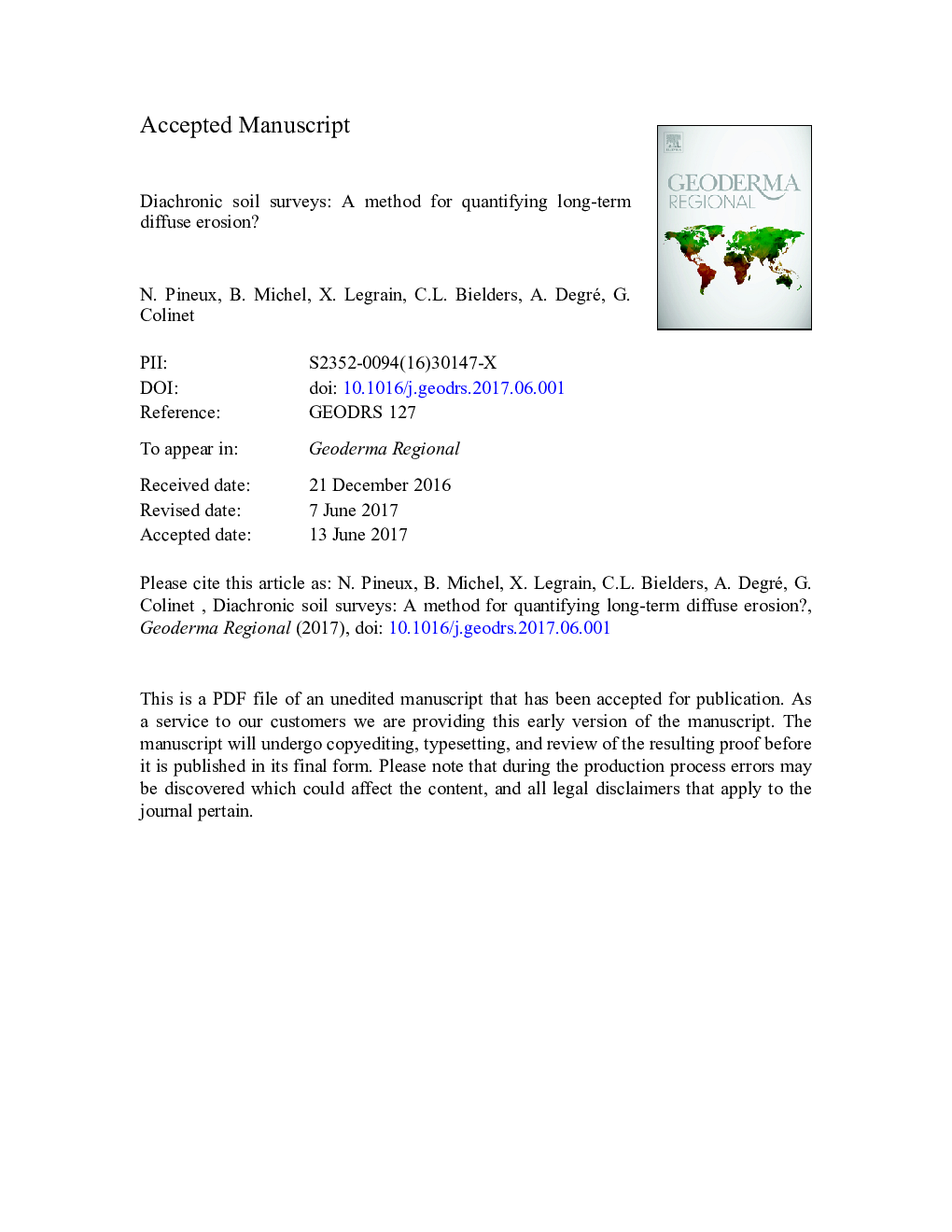| Article ID | Journal | Published Year | Pages | File Type |
|---|---|---|---|---|
| 5758650 | Geoderma Regional | 2017 | 38 Pages |
Abstract
Given the high inter-annual variability in soil erosion, representative measurements are best carried out over time scales of a few decades. In this study, a novel approach was tested that relies on diachronic, high-resolution soil mapping. For this test, a cropland-dominated watershed covering 116 ha was selected in central Belgium. An initial soil survey based on augering had been carried out in 1956, with a density of 1.8 auger points/ha. A second survey was carried out in 2015, with a density of 4.5 points/ha. The results were interpreted in terms of changes in the depth of transition between successive horizons. The results indicate that a great proportion of the soils classified as non-eroded in 1956 were strongly eroded in 2015. Strongly eroded soils represented 52% of the watershed area in 2015, whereas they had represented only 8% in 1956. Some colluvial areas have been subjected to erosion and then covered again by colluvium over the 60 years. Only the flatter areas near the watershed boundary appear to still be in the 'non-eroded soils or soil subject to weak erosion' category. A mean net erosion rate of 37 t/ha per year is computed for the watershed using this method. The diachronic comparison of the pedological maps over the 60-year time interval within a context of intensive farming is a potential source of information for the calibration of landscape evolution spatial modelling. This method joins the few ones allowing a quantitative spatialization of erosion and deposition phenomena at the catchment scale.
Related Topics
Physical Sciences and Engineering
Earth and Planetary Sciences
Earth-Surface Processes
Authors
N. Pineux, B. Michel, X. Legrain, C.L. Bielders, A. Degré, G. Colinet,
